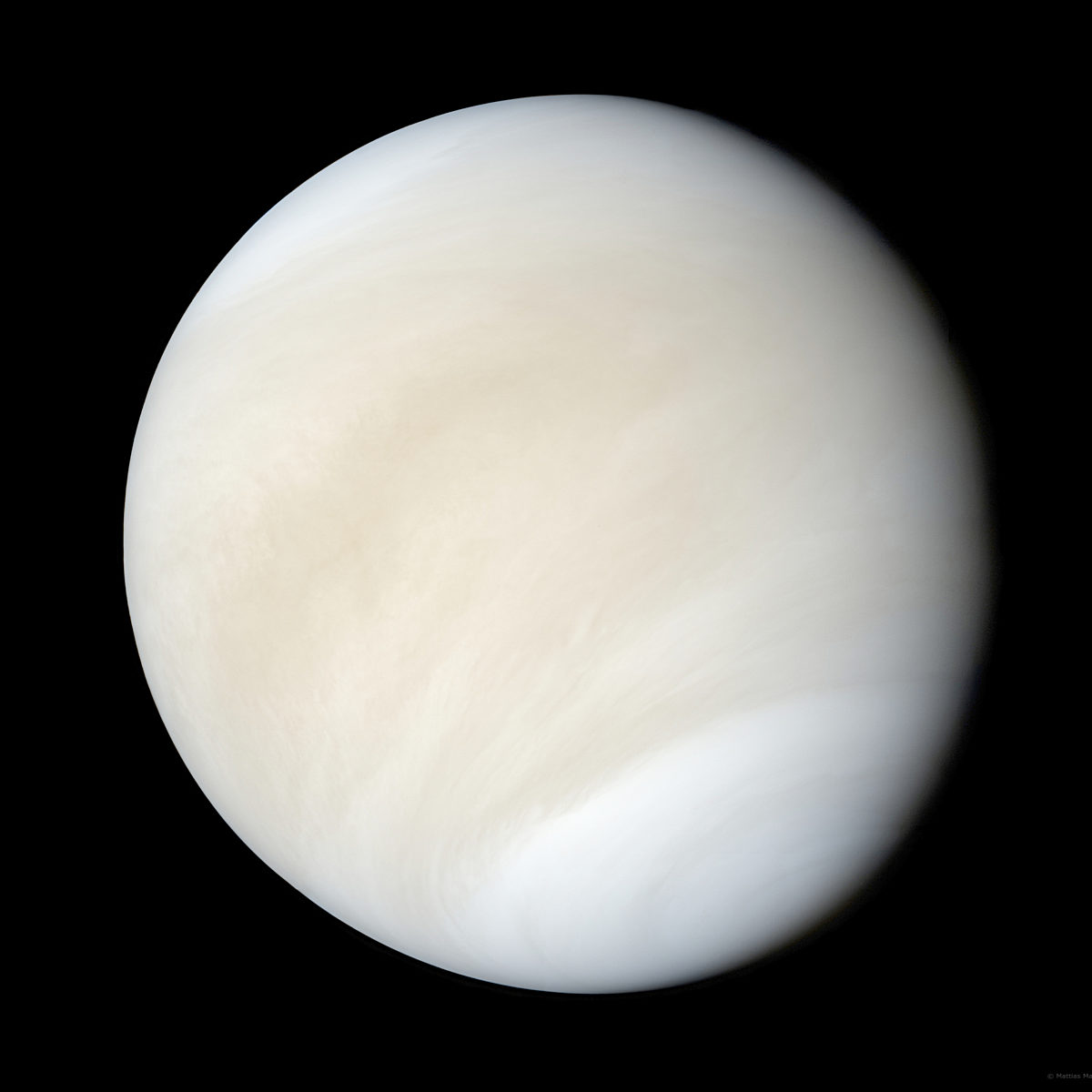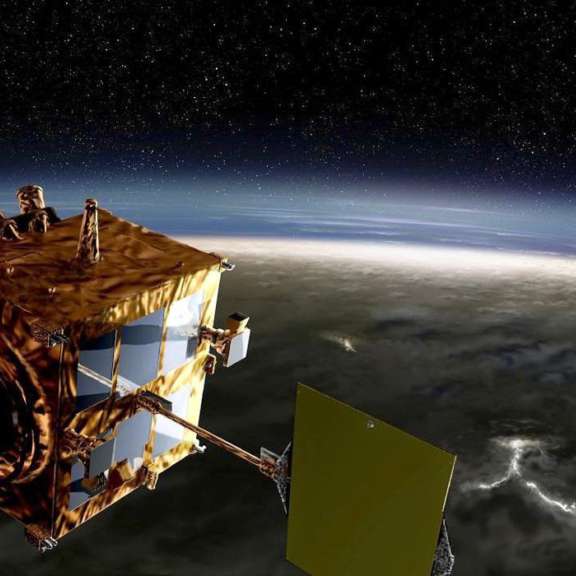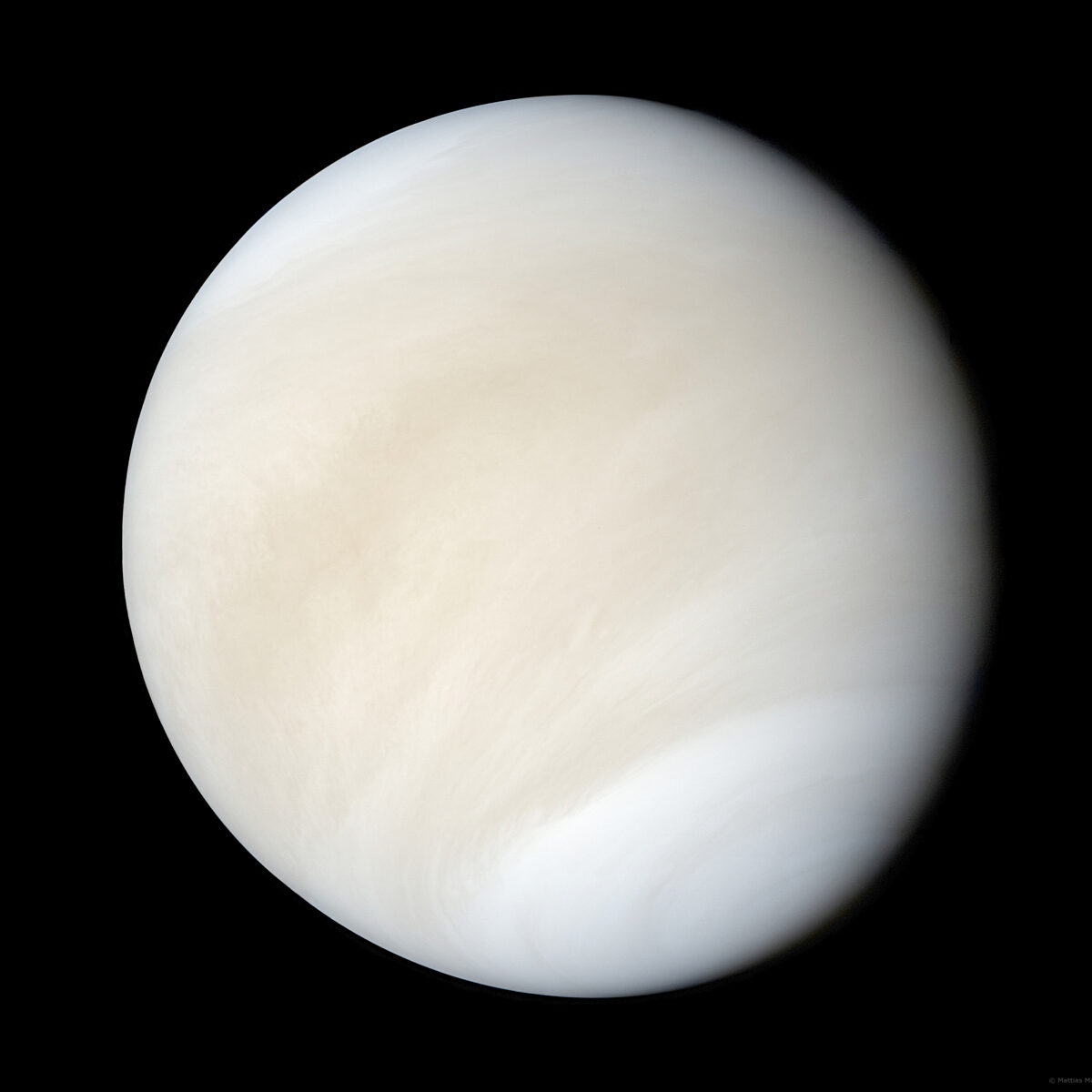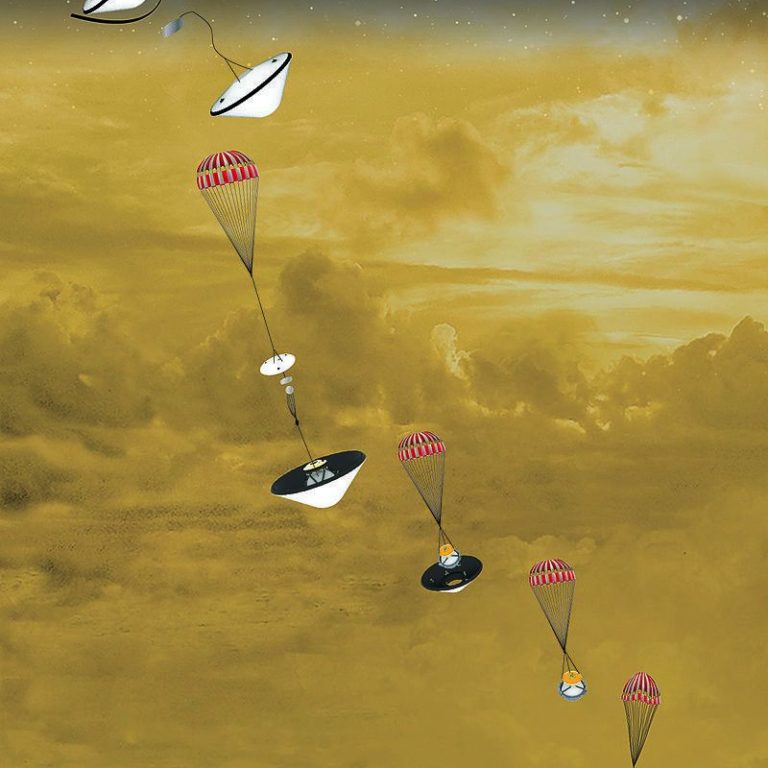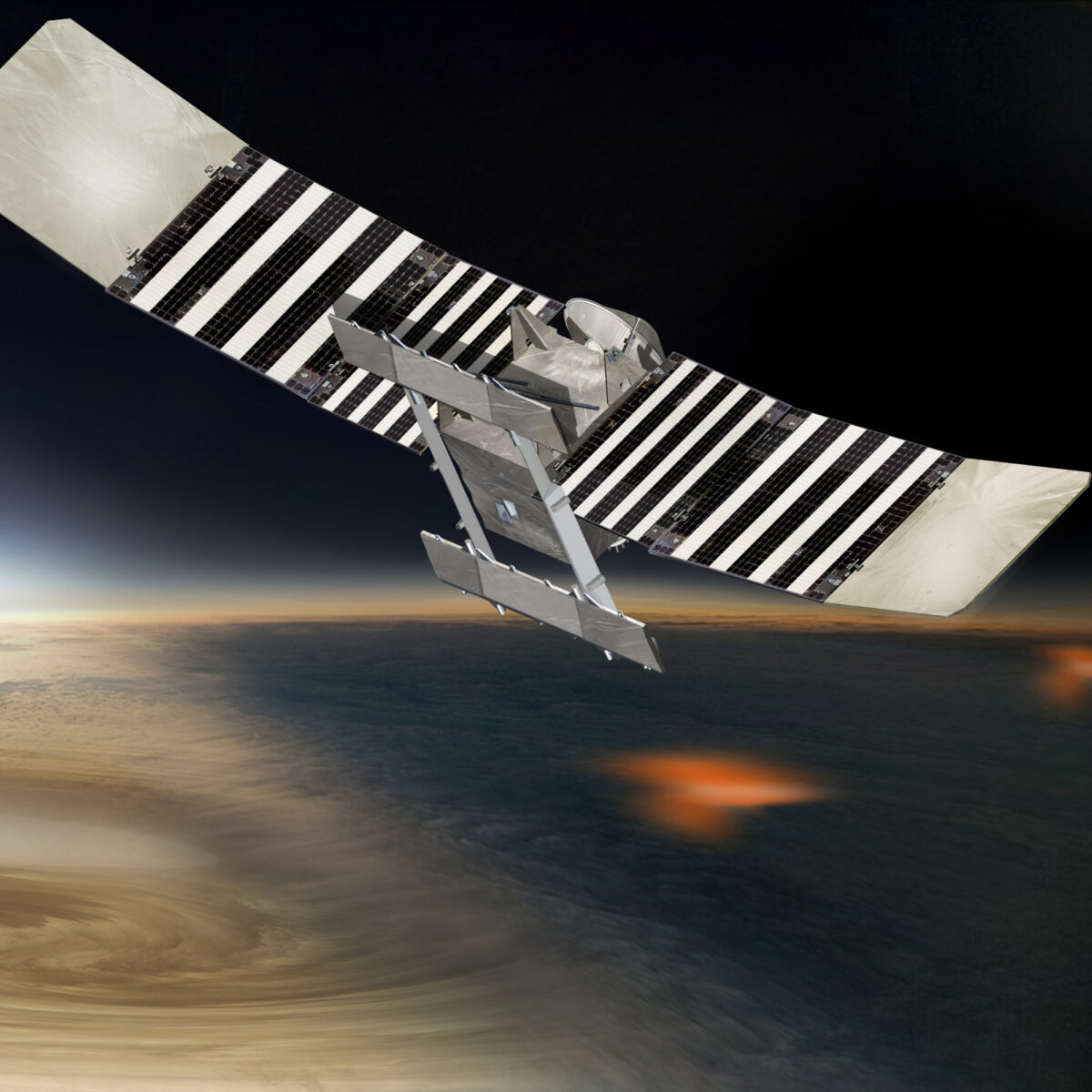Every mission to Venus ever
Venus was one of the first planets to be visited by spacecraft from Earth.
Probes do not last long on its surface, where the atmosphere is 50 times denser than Earth's and temperatures are hot enough to melt lead. Orbital studies hint that Venus may have hosted habitable oceans before becoming inhospitable. By studying Venus, scientists learn how Earth-like planets change over time.
Spacecraft headed to Mercury or to study the Sun up-close use Venus' gravity to adjust their trajectories.
Venus, Earth's twin sister
Venus may have had oceans and been habitable to life before being transformed into an inhospitable wasteland.
Active Missions
Akatsuki, the Venus Climate Orbiter
The Japanese Akatsuki mission entered orbit around Venus in 2015, searching for clues on how the planet's atmosphere works.
Future Missions
Shukrayaan
India aims to launch a Venus orbiter called Shukrayaan in December 2024 equipped with a radar, infrared camera, and international instruments to map the surface.
Rocket Lab and MIT's Venus Life Finder mission
Launch vehicle company Rocket Lab and MIT plan to send the first private mission to Venus as early as January 2025.
DAVINCI, a return to Venus’ clouds
NASA’s DAVINCI will be the first mission to visit the Venusian atmosphere since 1984, providing the most detailed measurements we’ve ever had of its composition and structure.
VERITAS, NASA’s Venus mapper
NASA will launch the VERITAS spacecraft no earlier than 2031 to study Venus and its past.
EnVision, Europe’s mission to Venus
The European Space Agency (ESA) is launching the EnVision spacecraft to study Venus and its past.
Past Missions
Venus Express
The European Space Agency's Venus Express studied the planet's ionosphere and atmosphere, enabling scientists to draw important conclusions about the surface.
MESSENGER
NASA's MESSENGER spacecraft flew past Venus twice on its way to Mercury.
Cassini-Huygens
NASA and the European Space Agency's Cassini-Huygens mission visited Venus twice during its long trek out to Saturn.
Magellan
NASA's Magellan orbiter mapped over 98% of Venus at a resolution of 100 meters or better using its radar.
Venera 11 and Venera 12
The Soviet Union's Venera 11 and 12 spacecraft studied Venus' atmosphere and landed on the surface. They were also meant to return color images but the lens caps failed to pop off. Their data gave evidence of lightning and thunder in Venus' atmosphere, and discovered carbon monoxide at low altitudes.
Pioneer 1 and Pioneer 2
NASA's Pioneer Venus mission sent 2 spacecraft to study the planet. Pioneer 1 was an orbiter that made a radar map of the surface, while Pioneer 2 consisted of four atmospheric probes. One of the probes survived to transmit data for over an hour after it impacted with the surface.
Venera 10
The Venera 10 spacecraft separated into two different sections — an orbiter and a lander — on October 23, 1975. Two days later, the lander touched down on the surface of Venus 2,200 kilometers from the Venera 9 lander, somewhere within a 150-kilometer (93-mile) radius of 15.42° N, 291.51° E. With the orbiter acting as a relay, the lander transmitted images from the surface as well as data about clouds and the surface environment.
Venera 9
The Venera 9 lander separated from the orbiter on October 20, 1975. Two days later, the lander touched down and became the first spacecraft to transmit a picture from the surface of another planet. It landed within a 150-kilometer (93-mile) radius of 31.01° N, 291.64° E. In addition, the lander sent back information on the Venusian clouds, atmospheric composition, and light levels. All of the information was transmitted from the surface to the orbiter, which then relayed the signal to Earth. Besides acting as a data relay, the orbiter also studied the cloud structure of the planet.
Mariner 10
Launch: November 3, 1973
Venus flyby and gravity assist: February 5, 1974Mariner 10 flew by Venus for a gravity assist on its way to Mercury. It flew within 4,200 kilometers (2,600 miles) of Venus and took the first ultraviolet images of the planet.
Venera 8
Upon Venus arrival Venera 8 used aerobraking to decelerate, and then deployed a parachute. A refrigeration unit cooled the spacecraft's components, protecting them from the intense heat as the lander descended to the surface. Once on the ground, the spacecraft transmitted data for 50 minutes, confirming a very high surface temperature and crushing atmospheric pressure. It also measured the light level on Venus’ surface and found it suitable for surface photography, setting the stage for the images to be returned by Venera 9, 10, 13, and 14.
Venera 7
When Venera 7 arrived it deployed a parachute and began its descent to the surface. Scheduled to take 60 minutes to descend, the probe touched down in only 35 minutes, possibly because its parachute may have been damaged by high winds. The spacecraft then transmitted a weak signal for 23 minutes, becoming the first spacecraft to return data from the surface of another planet. It reported surface temperatures of 475 degrees Celsius (887 degrees Fahrenheit) and atmospheric pressures 90 times greater than Earth's.
Cosmos 167, Cosmos 359 and Cosmos 482
The final stages of the rockets carrying these spacecraft into orbit failed and none of them were able to achieve the necessary trajectory to carry it on to Venus.
Venera 5 and Venera 6
The twin Venera 5 and 6 spacecraft arrived within a day of each other at Venus, after which they deployed parachutes and descended through the atmosphere. Both spacecraft relayed data for about 50 minutes before succumbing to crushing atmospheric pressures. Venera 5 and 6 allowed us to more precisely determine Venus' atmosphere and confirm its carbon dioxide dominant composition.
Mariner 5
Mariner 5 flew within 4,000 kilometers (2,400 miles) of the Venusian cloud tops. During its flyby, the spacecraft measured a surface temperature of 267 degrees Celsius (513 degrees Fahrenheit).
Venera 4
When Venera 4 arrived at Venus it dropped several instruments, including a thermometer and a barometer, into the atmosphere. It received data back from these probes before it deployed a parachute and descended into the atmosphere itself. Preliminary readings seemed to indicate that the probe had taken measurements all the way down to the surface, but later analysis suggested that the crushing atmosphere damaged the spacecraft at an altitude of almost 25 kilometers. The probe revealed an atmosphere made almost entirely of carbon dioxide, with temperatures ranging from 40 degrees Celsius (104 degrees Fahrenheit) high up in the atmosphere to 280 degrees Celsius (536 degrees Fahrenheit) closer to the surface, and pressures ranging from 15 to 22 atmospheres.
Venera 3
Venera 3 was the first spacecraft to land on (impact) another planet, but no data was returned. It is believed that Venus' thick atmosphere and crushing pressure destroyed the spacecraft on its way to the surface.
Venera 2
Venera 2 flew within 24,000 kilometers (about 14,900 miles) of Venus on February 27, 1966, but communications with the spacecraft were lost just before its close approach to the planet.
Zond 1
Communications with the spacecraft were lost while on its way to Venus.
Cosmos 27
The final stage of the rocket carrying the spacecraft into orbit failed and it was unable to achieve the necessary trajectory to carry it on to Venus.
Venera 1964A and 1964B
The Soviet Union's Venera 1964A and 1964B spacecraft never reached orbit due to rocket failures.
Sputnik 19, Sputnik 20 and Sputnik 21
The Soviet Union's Sputnik 19, 20, and 21 probes were unsuccessful due to failures of the final stages of their respective rockets.
Mariner 2
Mariner 2 was the first spacecraft to successfully fly by Venus, at an altitude of 34,773 kilometers (21,607 miles). The spacecraft discovered ground temperatures as high as 428 degrees Celsius (800 degrees Fahrenheit). Other instruments detected no water vapor in the atmosphere or any evidence of a magnetic field around the planet. Radio contact was lost on January 3, 1963.
Mariner 1
NASA's Mariner 1 veered off course after launch and had to be destroyed by ground controllers.
Venera 1
The Soviet Union's Venera 1 spacecraft was on its way to Venus when communications with the spacecraft were lost.
Sputnik 7
The Soviet Union's Sputnik 7 was the world's first Venus mission. The rocket's final stage failed and Sputnik 7 couldn't make the necessary trajectory to carry it on to Venus.


 Explore Worlds
Explore Worlds Find Life
Find Life Defend Earth
Defend Earth


